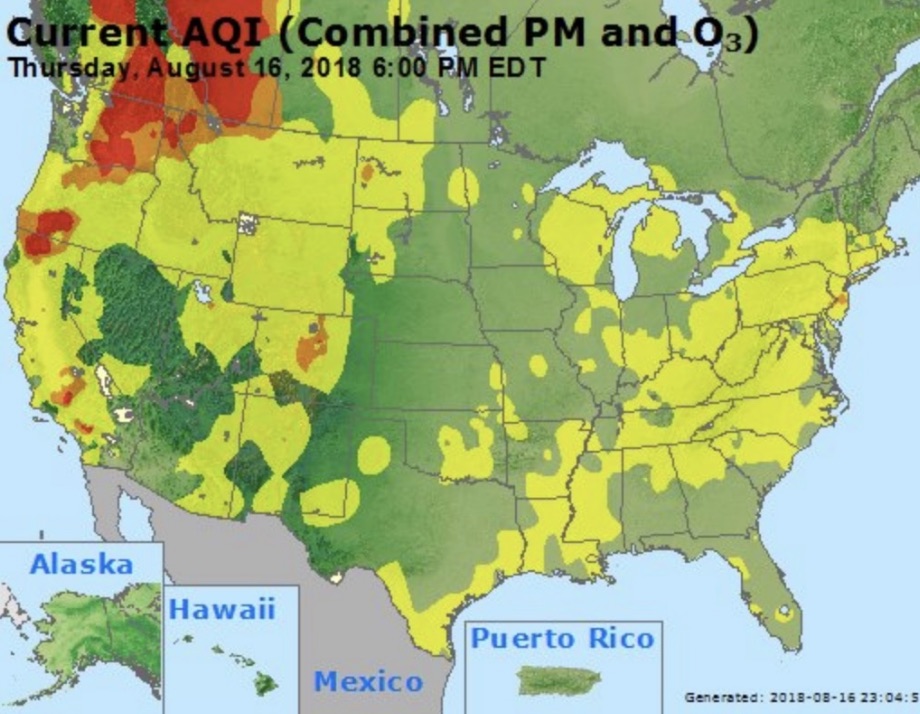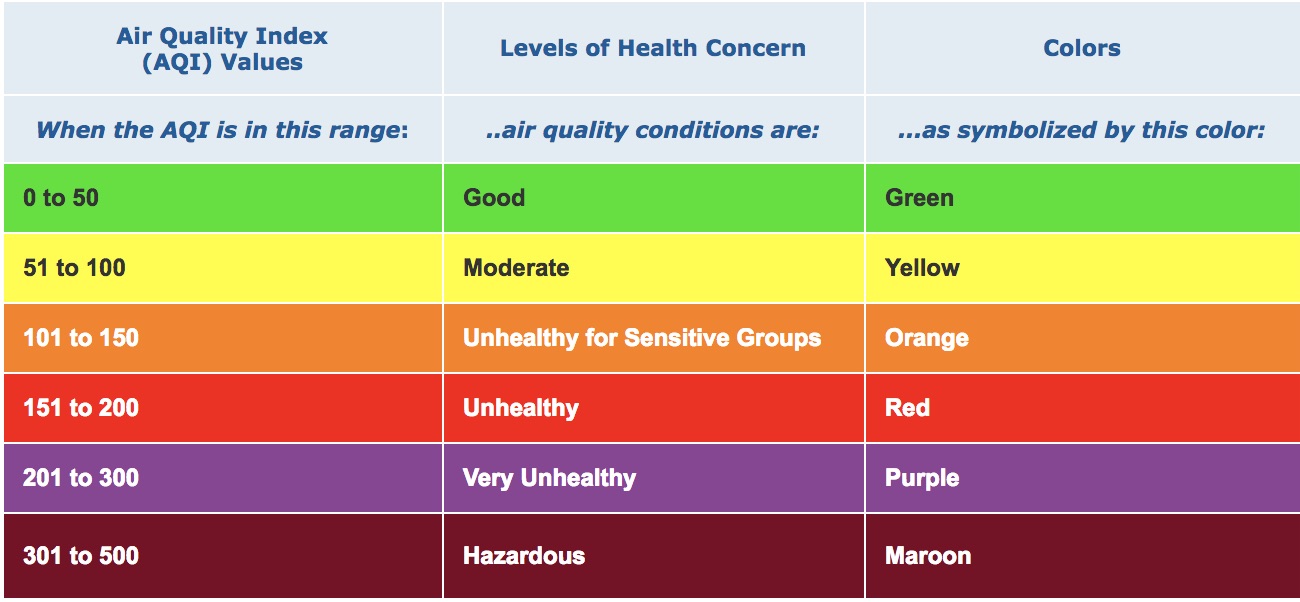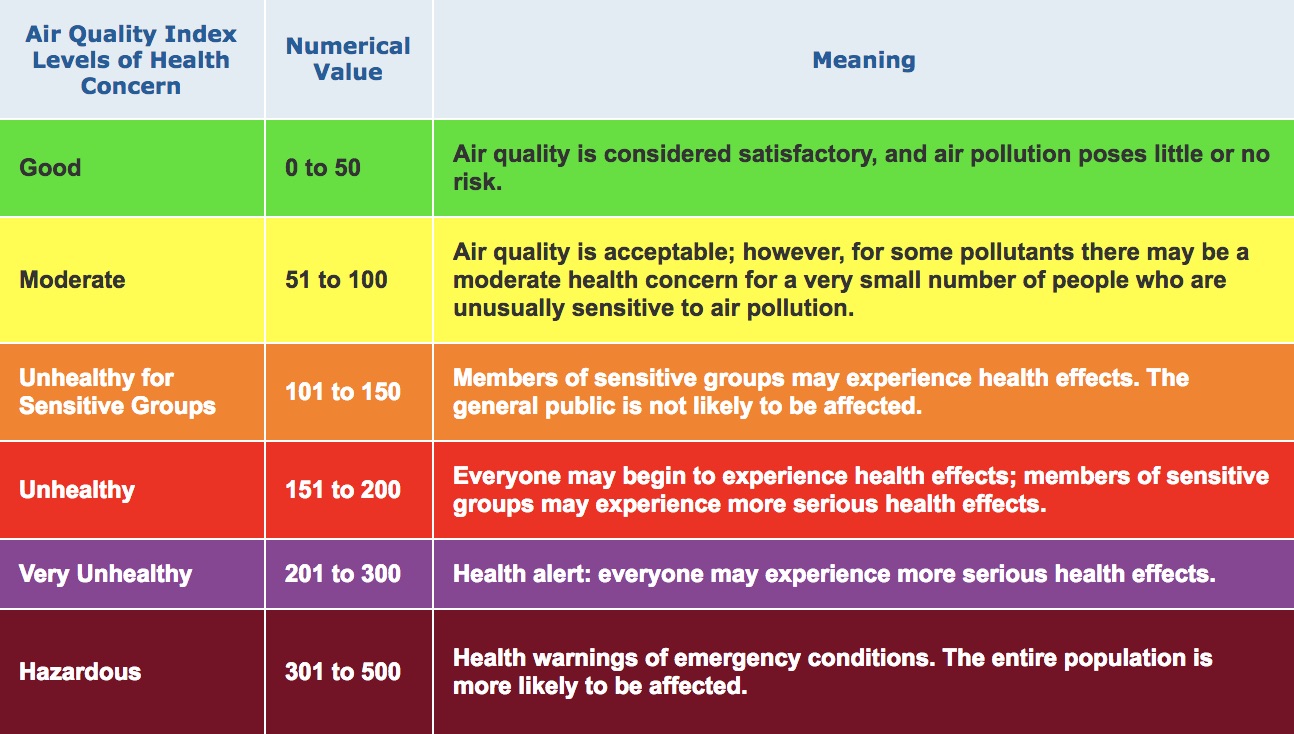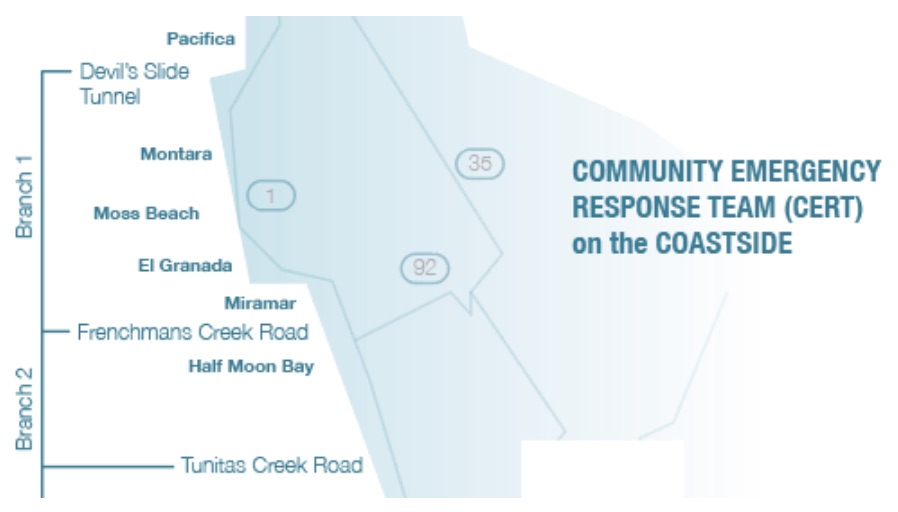|
Getting your Trinity Audio player ready...
|
LINKS. Do you know what you are breathing? Get the latest Particulate Matter and Ozone counts from AIRNOW.gov
Particulate matter (PM), also known as particle pollution, is a complex mixture of extremely small particles and liquid droplets that get into the air. Once inhaled, these particles can affect the heart and lungs and cause serious health effects.
Here is a snap shot of their website.
Air Quality Index (AQI) Basics

The AQI is an index for reporting daily air quality. It tells you how clean or polluted your air is, and what associated health effects might be a concern for you. The AQI focuses on health effects you may experience within a few hours or days after breathing polluted air. EPA calculates the AQI for five major air pollutants regulated by the Clean Air Act: ground-level ozone, particle pollution (also known as particulate matter), carbon monoxide, sulfur dioxide, and nitrogen dioxide. For each of these pollutants, EPA has established national air quality standards to protect public health .Ground-level ozone and airborne particles are the two pollutants that pose the greatest threat to human health in this country.
How Does the AQI Work?
Think of the AQI as a yardstick that runs from 0 to 500. The higher the AQI value, the greater the level of air pollution and the greater the health concern. For example, an AQI value of 50 represents good air quality with little potential to affect public health, while an AQI value over 300 represents hazardous air quality.
An AQI value of 100 generally corresponds to the national air quality standard for the pollutant, which is the level EPA has set to protect public health. AQI values below 100 are generally thought of as satisfactory. When AQI values are above 100, air quality is considered to be unhealthy-at first for certain sensitive groups of people, then for everyone as AQI values get higher.
Understanding the AQI
The purpose of the AQI is to help you understand what local air quality means to your health. To make it easier to understand, the AQI is divided into six categories:
Each category corresponds to a different level of health concern. The six levels of health concern and what they mean are:
- “Good” AQI is 0 to 50. Air quality is considered satisfactory, and air pollution poses little or no risk.
- “Moderate” AQI is 51 to 100. Air quality is acceptable; however, for some pollutants there may be a moderate health concern for a very small number of people. For example, people who are unusually sensitive to ozone may experience respiratory symptoms.
- “Unhealthy for Sensitive Groups” AQI is 101 to 150. Although general public is not likely to be affected at this AQI range, people with lung disease, older adults and children are at a greater risk from exposure to ozone, whereas persons with heart and lung disease, older adults and children are at greater risk from the presence of particles in the air.
- “Unhealthy” AQI is 151 to 200. Everyone may begin to experience some adverse health effects, and members of the sensitive groups may experience more serious effects.
- “Very Unhealthy” AQI is 201 to 300. This would trigger a health alert signifying that everyone may experience more serious health effects.
- “Hazardous” AQI greater than 300. This would trigger a health warnings of emergency conditions. The entire population is more likely to be affected.
AQI colors
EPA has assigned a specific color to each AQI category to make it easier for people to understand quickly whether air pollution is reaching unhealthy levels in their communities. For example, the color orange means that conditions are “unhealthy for sensitive groups,” while red means that conditions may be “unhealthy for everyone,” and so on.








